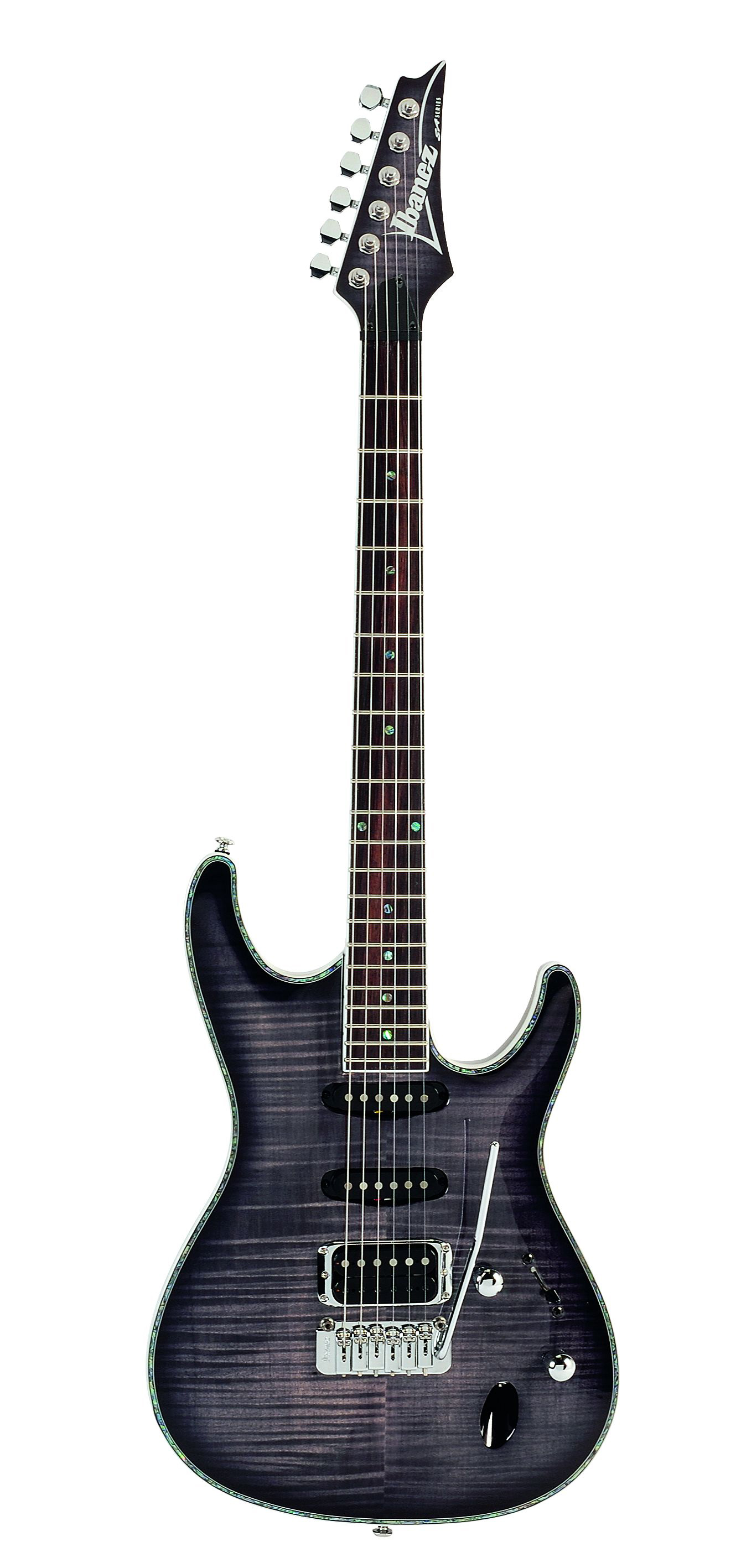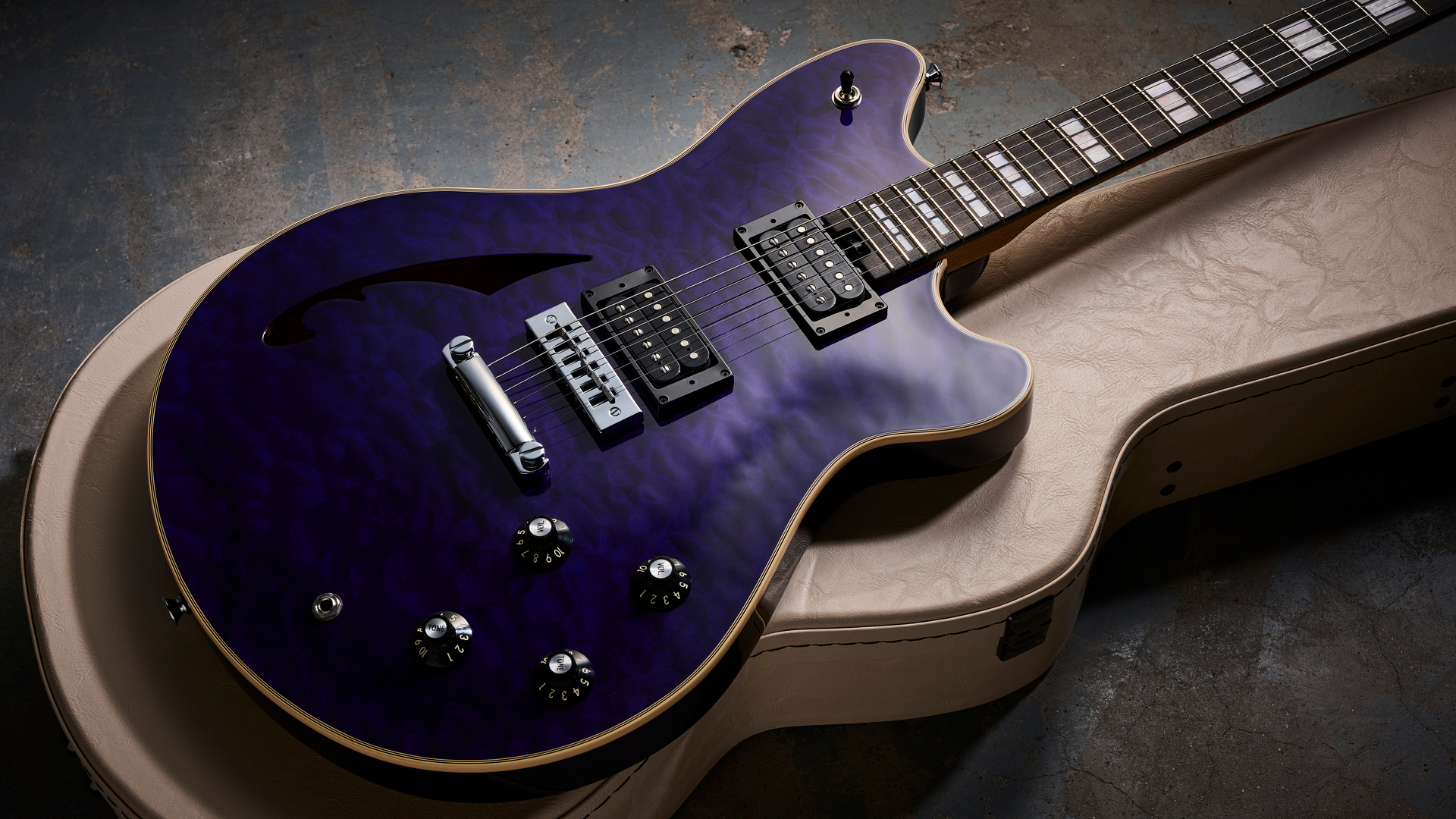MusicRadar Verdict
We wish we could get over the overly abrasive nature of the SAS36 when we turned up the heat, but we can't ignore what our ears are telling us and it's not as if the Ibanez catalogue as a whole doesn't offer the modern rock player a wealth of exceptional instruments. A standing ovation is due for the good price, though.
Pros
- +
Cool vibe and look.
Cons
- -
Frustrating tuning stability. Harsh performance.
MusicRadar's got your back
Frank Gambale was approached by Hoshino (Ibanez's parent company) in 1986 with regard to producing a signature model, and a year later four FGM models were added to the catalogue.
Frank's now with Yamaha, of course, but during the Ibanez design process he used on occasion the now long-gone RG540 model, a design that mutated into the Sabre - or S - range still available today.
The ultra-thin mahogany body and neck provided a surprisingly big tone with an unrivalled playing comfort, not to mention an eye-popping desert yellow finish option first seen on Vai's original batch of JEM777 models.
In fact, so insubstantial can S Series guitars feel that some players were put off by the whole idea, so Ibanez reworked the design to continue the super-curved body contours and mahogany tonewood but to also include a slab back and, while we're at it, a non-locking pivot vibrato.
Overview
This guitar features a humbucker in the bridge position and this is where we find the first pleasant surprise.
Described as a True Duo pickup, the design incorporates not two but a trio of coils to allow for the provision of a genuine stacked single-coil-size humbucker.
It's the row of flat polepieces rather than the hex screws that acts in this fashion and, as the spec includes both a standard five-way plus a push/pull pot on the volume control, there are more sounds available here than you may first expect.
With the switch in position one you have a standard humbucker; pull up on the pot and the solo'd stacked single-coil humbucker is ready to go.
In position two the middle pickup is combined, in parallel, with however you've set the bridge unit; position three allows the middle to be solo'd. Positions four and five are middle and neck, and solo'd neck respectively. It's certainly impressive.
The curved nature of the front face of the SA is attractively mirrored by the ergonomic chrome pickup surround, and the slick jack input is a hangover from the early Sabre days.
By the way, if you use a lead with right-angled jacks, most won't fit in here without the non-recommended use of a hammer: forewarned, as they say.
As ever with designs from this end of the market, the merest inclusion of any sort of abalone or mother-of-pearl adds extra dollops of perceived quality to a guitar and, if done as well as here, we have no problem with the practice. The cap of genuine flamed maple is nicely bound in both white and abalone too.
There is a small belly contour to the rear of the mahogany body and the edges have been nicely rounded off to continue the streamlined vibe: weighing in at under 2.5 kilos it's thin too, measuring a mere 31mm thick by the end strap pin.
Although Ibanez re-established its contemporary name as a maker of hotrod rock guitars in the eighties, thanks in part to the wonders of the Edge double-locking whammy, it's a more staid pivot vibrato here, specfically the SAT Pro bridge.
Doffing its hat at the low-mass Wilkinson design, this design offers locking saddles that disallow any horizontal movement, added to string stability.
With the bar pushed all the way down, the strings become just about 90 per cent slack and, thanks to a graphite nut and some serious levels of string stretching, tuning stability is... well, we'll get to that.
The set maple neck comprises of three pieces for enhanced sustain, tone and stability and ends in the classic Ibby headstock, complete with Schaller M6-a-like tuners.
This is a more substantial neck than the bend-in-the-wind feel of those old FGM models and offers medium frets and a rosewood 'board adorned with small abalone inlays alongside a wide yet comfy shallow 'D'-shape.
Sounds
We're not saying that the SAS36 doesn't rock, but its forte is absolutely within the clean and slightly driven domains.
Each of the seven possible settings are beautifully transparent, with position four a bang-on perfect tone for funky chops and position two, with the stacked single-coil switched in, akin to a beefed up Tele neck pickup. And these are just two highlights.
In fact, this comparison with the good old T-type is pertinent right across the board as, with more and more gain added into the equation, the tone becomes in turn sharper and more aggressive - it's all good.
As you enter out-and-out rock territory, typified by cascading high gain, this high-end treble and insistent crystalline character starts to grate.
This is a good thing up to a point as solos and other forays up the neck easily stand out, all strident and authoritative, but for more basic rhythm lines it's not so good - there's just not enough flesh for our liking.
It also has to be reported that our example required constant retuning during our testing, and not just after a bout of Vai-inspired dive-bombing either, which is a shame.
Still, there's no tried and trusted rule that states that an Ibanez should automatically be perfect for rock and not much else and, if your style is based around clean and more laid-back overdrives, the feel and look demands you check this out.
Simon Bradley is a guitar and especially rock guitar expert who worked for Guitarist magazine and has in the past contributed to world-leading music and guitar titles like MusicRadar (obviously), Guitarist, Guitar World and Louder. What he doesn't know about Brian May's playing and, especially, the Red Special, isn't worth knowing.

“I really thought I was going to die... and it absolutely was so freeing”: Blink 182’s Mark Hoppus talks surviving cancer and his band’s resurrection

“From the very start of his social media rise Giacomo has been using other people’s compositions”: Social media guitar influencer Giacomo Turra accused of using other musicians’ arrangements and passing them off as his own

“We finally buried the hatchet!!!”: 20 years after he accused her of miming and called her “a fairground stripper”, Elton John and Madonna are speaking to each other again










